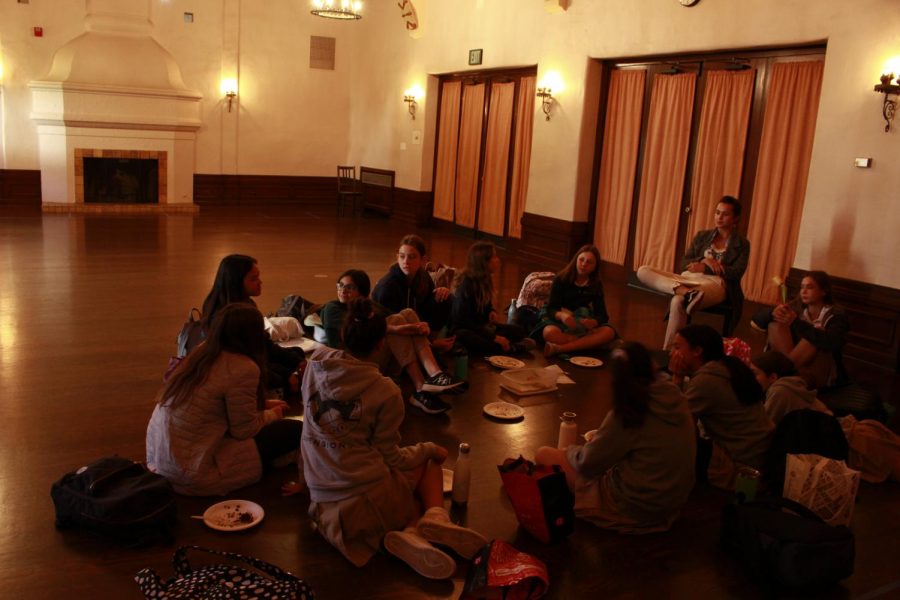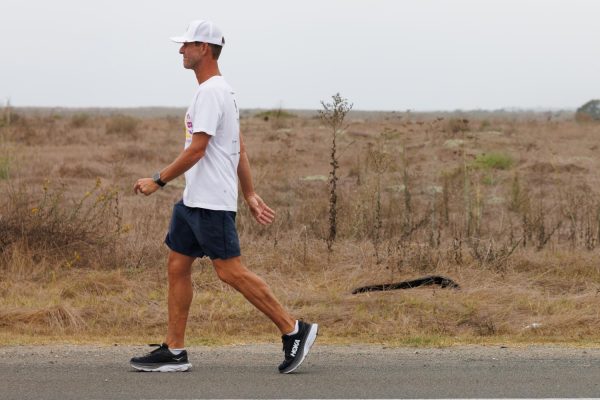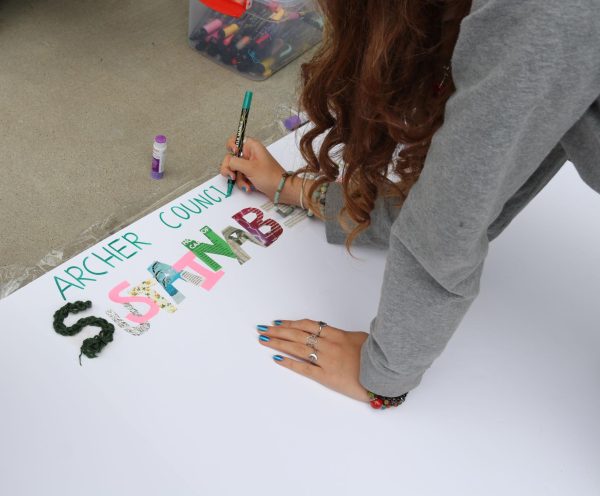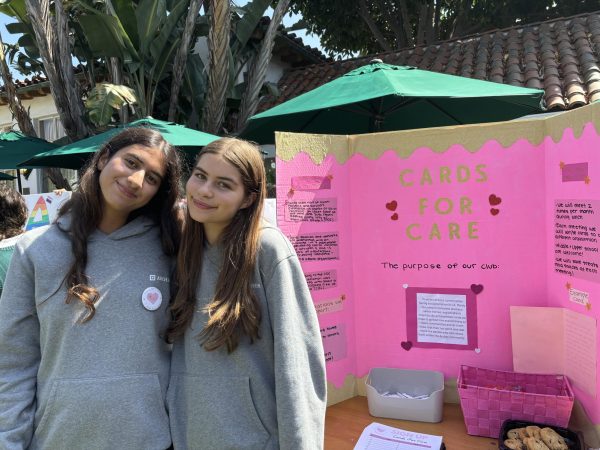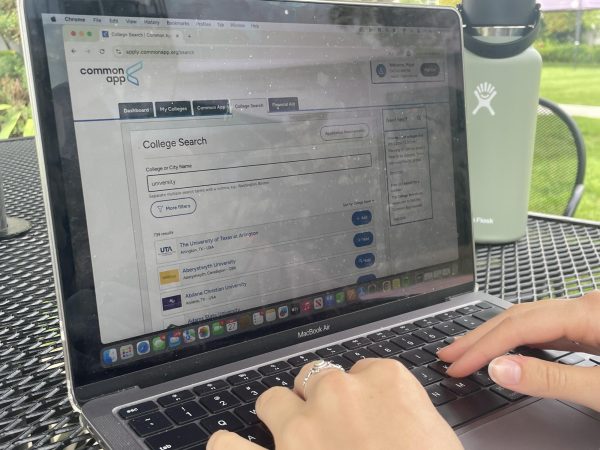Advisory Revamp: Eighth, ninth grade advisories incorporate Social Emotional Learning, adapt to student feedback
Photo credit: Rio Hundley
Eighth graders sit in the Rose Room during advisory. This year, the eighth grade has undertaken a new mentorship program, where they originally rotated between advisers. Now, after recent changes, students will be staying with one adviser.
When Dean of Students Jenn Babin saw Patty Lancaster, Archer’s guidance counselor, holding an advisory binder from the year 2000, she felt that it was time for an advisory ‘revamp.’
At the start of the 2018-2019 school year, Archer changed the structure of eighth and ninth grade to incorporate Social and Emotional Learning (SEL). Since then, the administration has altered the program based on student feedback.
“I spent the summer doing a ton of research [on] different advising programs, mentorship programs, [seeing] what other schools do [and] what the research says,” Babin said. “[I] looked at all of the research, and [had] conversations with Ms. Pav, and Ms. Warner, and the deans. [I got] feedback from students and from advisers.”
Varied reactions for ninth grade
In a departure from the traditional advisory structure, ninth-grade advisories are led by a mix of academic teachers, one coach and one art teacher.
Babin said ninth graders are split into four “Harry Potter style” houses. Each house has three to four mentors and around 18 students. Ninth-grade reactions to the new advisory program have been “mixed,” freshman Quincy Gordon said.
“It’s so big that it’s hard to really connect with the teachers [and] the other students in it,” Gordon said.
In contrast, freshman Bess Frierson finds the new advisory to feel “similar” to the format of last year’s advisory.
“It feels almost like an HD class. And it’s nicer, especially with the schedule, where you have it on Fridays and Wednesdays rather than Mondays and Wednesdays,” Frierson said. “I feel very close with the people in [my advisory]… [I] feel good about my mentors, and I don’t mind that it’s a big group. I like it a lot.”
Back to basics for eighth grade
The eighth-grade mentorship program rotated through different advisers throughout the beginning of the year. The same group of girls remained together but rotated between different advisers.
The administration has made changes to the eighth-grade program due to student feedback. Before the change, students said they appreciated being able to switch between advisers, but at times found it confusing.
“It really does help in class [to have] a personal connection to all of your teachers … because in the advisory teachers also share,” eighth-grader Zoe Epps said before the adjustment occurred. “It’s interesting; it’s a good idea, [but] maybe two weeks with a teacher would be easier, because just changing weekly really confuses most of us.”
Before the modification of the eighth-grade advisory program, class representative Allie Rich sent out a survey to her grade asking if they liked the advisory program and said the answer was a “resounding no.”
“People just like having something constant to go to,” Rich said. “[The mentorship program] kind of makes us feel like we don’t really have one person that we can talk to.”
Eighth-grade class representatives Allie Rich, Zoe Woolenberg and Mia Ronn brought the survey data and reasons to make a change to eighth-grade dean Susan Smith in what she called a “professional” and “calm” manner. In response to the feedback, eighth grade reverted back to the traditional advisory structure, in which small groups of students remain with a single advisor.
“[Eight-graders] really felt like they were missing having [a] home base, and we heard that,” Smith said. “We’re going to continue the SEL curriculum…throughout the rest of the year. The only difference is they’re not rotating.”
Open to feedback
Smith encouraged students to utilize the relationships that they formed with multiple faculty members in the earlier system.
“I’m glad we did the rotations and they all got to rotate through one mentor,” Smith said, “So, if there’s someone else that they feel like they connect with more than…their assigned mentor for the year…they can still go to them if they need support or anything like that.”
Babin was also open to feedback. She believes that anytime a pilot program is run, “things will go well” and “things are not going to go well.”
“We made some adjustments with the eighth grade, and we’re working to make some adjustments with the ninth grade model too based on student feedback,” Babin said. “We’re adjusting as we go.”
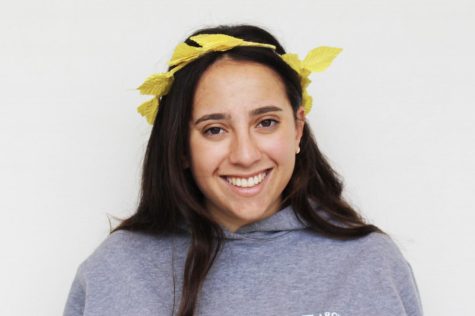
Allie Worchell joined The Oracle writing staff in 2017. This year she is excited to be a member of the editorial board as the Voices Editor. In school,...
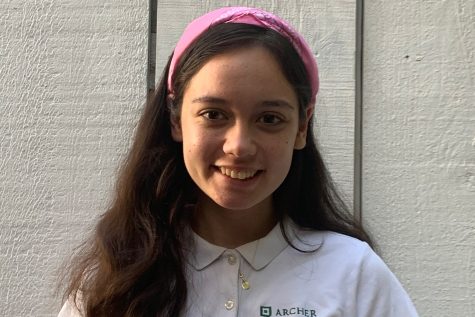
Rio Hundley was involved in the Oracle from 2017-2021. She graduated in 2021. She was promoted to Sports Editor in 2019 and became Features Editor in 2020....



